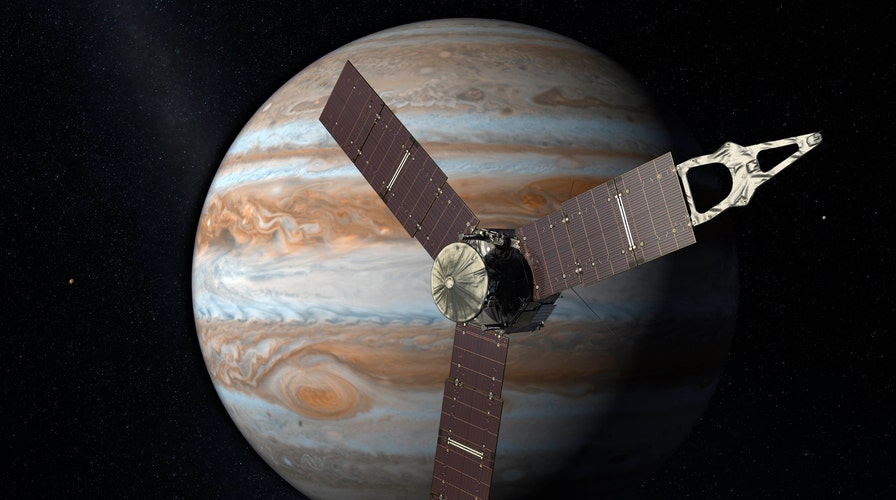NASA’s Juno spacecraft entered Jupiter’s orbit late Monday, ending a journey of almost five years to the solar system’s largest planet.
In a patriotic coincidence, Juno arrived at Jupiter on the Fourth of July, successfully entering the planet’s orbit after a 35-minute burn. NASA received confirmation that the burn had completed at 11.53 p.m. EDT Monday.
Soon after the burn was completed, Juno turned to enable the sun’s rays to reach the spacecraft’s 18,698 solar cells, making it the farthest solar-powered spacecraft from Earth. Juno has traveled 1.8 billion miles to reach Jupiter.
“Independence Day always is something to celebrate, but today we can add to America’s birthday another reason to cheer -- Juno is at Jupiter,” said NASA administrator Charlie Bolden, in a statement. “And what is more American than a NASA mission going boldly where no spacecraft has gone before? With Juno, we will investigate the unknowns of Jupiter’s massive radiation belts to delve deep into not only the planet’s interior, but into how Jupiter was born and how our entire solar system evolved.”
Related:
The confirmation of Juno’s insertion into Jupiter’s orbit was received from tracking data monitored at NASA’s Jet Propulsion Laboratory in Pasadena, California, and at Lockheed Martin’s Juno operations center in Littleton, Colorado. The telemetry and tracking data were received by NASA’s Deep Space Network antennas in Goldstone, California and Canberra, Australia.
Juno’s arrival at Jupiter was greeted with delight on social media.
“Congratulations @NASA! What you accomplished last night is incredibly hard. Hello Jupiter!,” tweeted former astronaut Chris Hadfield.
Congratulations @NASA! What you accomplished last night is incredibly hard. Hello Jupiter! https://t.co/fenSVkfwwY pic.twitter.com/0M1QaFtXRJ
— Chris Hadfield (@Cmdr_Hadfield) July 5, 2016





















